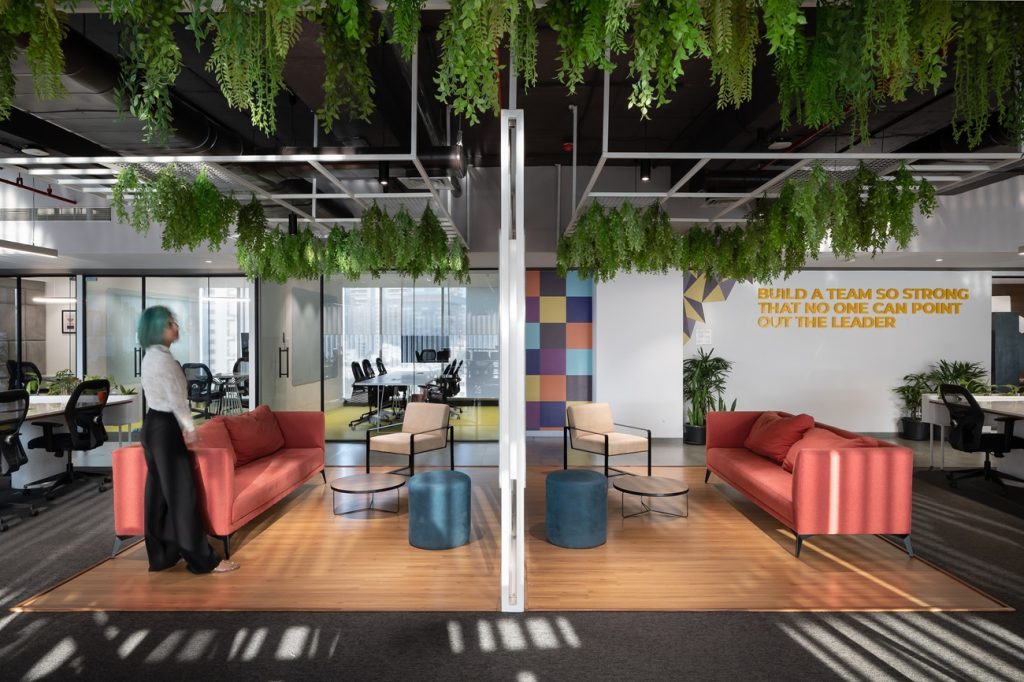In conversation with architects, designers, and business leaders shaping the future of work
The global economy has always had ripple effects on how businesses operate. One surprising catalyst in recent times is the U.S. tariffs imposed under President Donald Trump’s administration. While these tariffs targeted trade between the U.S. and countries like China, their impact echoed across industries and borders, including India’s commercial real estate and office interiors market.
The Invisible Hand of Tariffs in India’s Workplace Evolution
You might wonder as to how U.S.-China trade war can influence a CEO’s decision to choose between an open-plan or modular office design in Mumbai?
Here’s the thing: over 60% of office furniture and fit-out materials in India are either imported or include imported components. Tariffs on aluminium, steel, electronics, and raw materials meant increased manufacturing costs globally. According to Statista, steel prices surged by over 50% in 2021 post-tariff implementations, trickling down to the final cost of furniture, lighting systems, and HVAC components used in premium office interiors.
This matters because cost fluctuations change the conversation from “what looks best?” to “what is most sustainable and cost-effective?”
The Shift in Design Decisions
For many Indian architects and workplace planners, the shift was not just economic—it was strategic.
With global supply chains disrupted, local sourcing became a bold new path. Indian furniture manufacturers and modern office interior architects had to rise to the challenge offering high-quality, modular solutions at a competitive price.
Studio AsA, for instance, partnered with Indian manufacturing units to co-develop sustainable furniture solutions that reduced reliance on foreign imports without compromising aesthetics or ergonomics.
Business Leaders Taking Note
According to Knight Frank’s 2023 India Office Market Report, leasing activity in top 8 Indian cities saw a 17% YoY growth indicating a steady demand for new-age workspaces. Interestingly, over 70% of occupiers are now asking for more flexible layouts and hybrid-ready infrastructure where cost-efficient, locally manufactured solutions can truly shine.
Business leaders today aren’t waiting for stability instead they’re creating it by investing in smart, sustainable, future-ready office interiors.
The Design Response: Function, Flexibility, and Financial Sense
At Studio AsA, we believe office design is about aligning with business goals. Tariff-induced disruptions nudged the industry toward:
- Agile office interiors that can evolve with changing teams
- Increased use of Indian materials and craftsmanship
- Sustainable office designs that reduce environmental impact and dependency
- Modular furniture that supports hybrid work models
These are essential responses to a shifting global economy.
Building Trust Through Resilience
Trust is built in moments of challenge. The tariffs may have posed difficulties, but they also revealed how we can innovate, adapt, and push forward.
At Studio AsA, we adapt to global shifts. Our design approach is rooted in research, responsiveness, and resilience. We collaborate with economists, supply chain experts, and materials specialists to ensure our clients are positioned to thrive through them.
In Conclusion
Trump’s tariffs may have seemed far removed from India’s office interior design scene. But as this article has shown, the echoes were loud and lasting. The good news is that they’ve led us to rethink value, quality, and trust in new, exciting ways.
Let’s co-create workplaces that are globally informed, locally crafted, and built to last.



